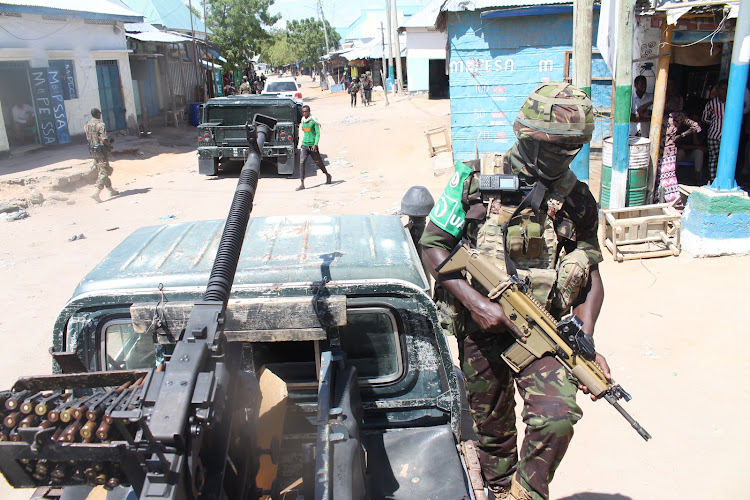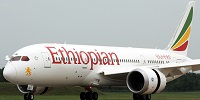ANDREW KASUKU

Image: ANDREW KASUKU
Kenya Defence Forces may not withdraw from Somalia soon, after all, thanks to complexities it faces in the war-torn country.
On Thursday, Kenya will mark a decade since it’s entry into Somalia on October 14, 2011 after launching Operation Linda Nchi.
Following a series of attacks by the al Shabaab at the Kenyan Coast and other parts of the country, Kenya sent its troops to Somalia. All in an exercise of the right of self-defence after invoking article 51 of the UN Charter.
Kenya was later formally integrated into African Union Mission in Somalia (AMISOM) on February 22, 2012 via the United Nations Security Council Resolution 2036 (2012) and charged with manning sector two.
Other sectors under Amisom manned by other Troop Contributing Countries include sector one (Uganda), sector three (Ethiopia), sector four (Ethiopia and Djibouti), sector five (Burundi) and sector six (Kenya and Ethiopia).
Sector two, where KDF solders are is further divided into three sub sectors namely central, north and south.
KDF’s presence is in middle and lower Juba region with a total of 16 Forward Operating Bases.
Some of the FOBs include Dhobley, Hoosingo, Kolbiyow, Ras Kamboni, Kuday, Abdale Birole, Gedo, Burahache, Tabda, Afmadhow, Belles Qoqani and Sea Port.
Attacks on KDF bases that led to death and abductions of soldiers have constantly provided fodder for calls for withdrawal of troops from Somalia.
The AMISOM currently operates under resolution 2,568-2021 which according to the laid down Transition Plan, troops contributing countries exit by end of 2021.
But is Somalia ready for KDF exit?
Three priorities have to be undertaken before AMISOM exit, according to the 2017 Somalia Transitional Plan, endorsed by the African Union Peace and Security Council and United Nations Security Council.
They include operational activities, institutional capacity building and supporting activities (material and logistical support of Somali Security Forces.
The operational activities include reducing al Shabaab capabilities so as to provide an enabling environment for Somalia to undertake social economic activities while institutional capacity includes providing training and mentorship to SSF.
Supporting activities on the other hand include material and logistical support to SSF.
Amisom sector II commander Brigadier Jeff Nyagah, who is also the contingent commander of the Kenyan troops serving in Somalia, said while much has been achieved over years, the situation remains stable though complex.
He said sustainable peace and security overall of Somali Security Forces have been achieved “but al Shabaab remain a potential threat to Somali security and regional peace… we continue to undertake surgical intelligence led operations.”
He noted that the operating environment presents increasing complex challenges arising from both internal and external complexities being perpetuated by both state and non-state actors, making complete exit of troops unrealistic.
“We are also looking at clan dynamics that come to play when it comes to intra conflict and these are some of the issues we have to think through and see what they potent to us,” he said.
Nyagah was addressing journalists at Dhobley Forward Operating Base, the headquarters and nerve centre of operations for sector II.
Asked whether KDF would withdraw its troops, he said that, “drawdowns have happened before with ripple effects on operation.”
Kenya, US and Turkey have been providing mentorship and capacity building to Somali troops.
While SSF can independently conduct limited operations, Nyagah noted that the SSF have some milestones to cover.
“Actually we should be looking at how to enhance the capacity of Amisom or even make it multidimensional so that more resources can be pumped in.
“There will be assessment on the structures and systems put in place so that we can say now we are going to have a further drawdown or exit,” Nyagah said.
The revelations may mean a further stay for KDF in Somalia.
Realistic timelines for exit, he said, are also dependent on the political processes, “and these are ongoing discussions at the highest level.”
Currently, tensions between Somali Prime Minister Mohamed Hussein Roble and President Mohamed Abdullahi Farmajo make the security situation volatile.
President Farmajo’s term came to an end in February but his plans to extend his term have thrown succession plans into crossword.
The situation means more tasks for Amisom.
“We have a responsibility of assisting SSF in the electoral process but at KDF under Amisom we remain apolitical.
“We don’t interfere with political processes…we only act to support them in the event there is serious disruption of the electoral process by al Shabaab, but for internal matters they take responsibility,” Nyagah said.
Experts argue that events in Afghanistan are a cause for worry to security actors in Somalia.
Noah Midamba, an expert in Defense and Foreign Policy, said that the situation in Afghanistan has to be contained and there has to be a legitimate government which has control without outside interference.
“These (al Shabaab) are extremists with an extremist’s idea and anytime there is a sense of victory of a legitimate government they will celebrate because they want to use the same kind of example.
“They believe that one day they will control Somalia and Kenya and the rest of Africa has to be very worried of that kind of development,” he said.
Nyagah, while weighing in on other Afghanistan matters said: “We are living in a troubled world where one event affects other parts.
“Global events keep on scanning the operating environment beyond where we are deployed. We looking at global events and what they potent to us and whether those events embolden our adversaries particularly al Shabaab, to make them more resilient.”
With the realities, it’s unlikely KDF will withdraw from Somalia soon.
Reports indicate that instead of withdrawing, a reconfigured AMISOM will extend stay based on threats assessment and funding.
While attacks in Kenya have reduced significantly, Anti Terror Police Unit continues to make arrests of suspected terror suspects in different parts of country.
In Northeastern and North Coast, few Improvised Explosive Device attacks remain.
“The KDF under Amisom remain resilient, committed and focused with the mandate.
“Our resolve and determination remain undeterred, the complexity of the operating environment notwithstanding” Nyagah said.
Source: The Star


